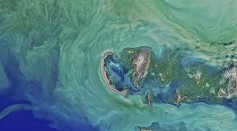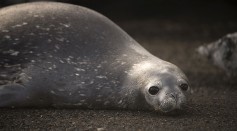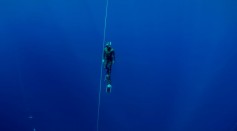seals

2,500 Dead Caspian Seals Were Spotted on Russia's Caspian Sea Shore

Great White Shark Captured on Camera in a Bloody Encounter With Seal as It Attacked and Ate Its Prey Turning the Water Red

Seals Discovered Using Whiskers for Sensors and Hunting Preys Under Deep Oceans for the First Time

Endurance Shipwreck: How Shackleton's Vessel Was Rediscovered Underneath Antarctica's Ice Sheets

Tuberculosis Come from Sea Lions, Seals? Ancient DNA Found in 3 TB Genomes Shows Proof

Shark's Declining Population Leads to Physiological, Behavioral Changes in Seals

Seals Have A New Job: Exploring Antarctic Ocean Conditions in Continental Shelf Areas That Threatens to Collapse
White Shark Attacks Caused By Natural Handicap and Mistaken Identity, Study Says

Freedivers Beat Seals During Deepest Dive at Depths of 107 Meters, Study Found
Female Elephant Seal Spends 80% of Their Day Foraging Small Fish in Deep Seas
Seal Populations in Europe Increased Due to COVID-19 Lockdowns
Same Evolutionary Pattern Followed By Three Marine Mammals: Seals, Dolphins & Whales
Seals May Use Earth’s Magnetic Field to Navigate
Most Popular

How Technology Is Changing the Real Estate Industry?

How a Plant-Based Diet Can Protect Against Breast Cancer: Insights from Nutrition Research

Study Reveals High Turnover in Scientific Research Careers: What This Means for Future Scientists

Nikolay Karpenko Biography, Photo, Career, Accomplishments






